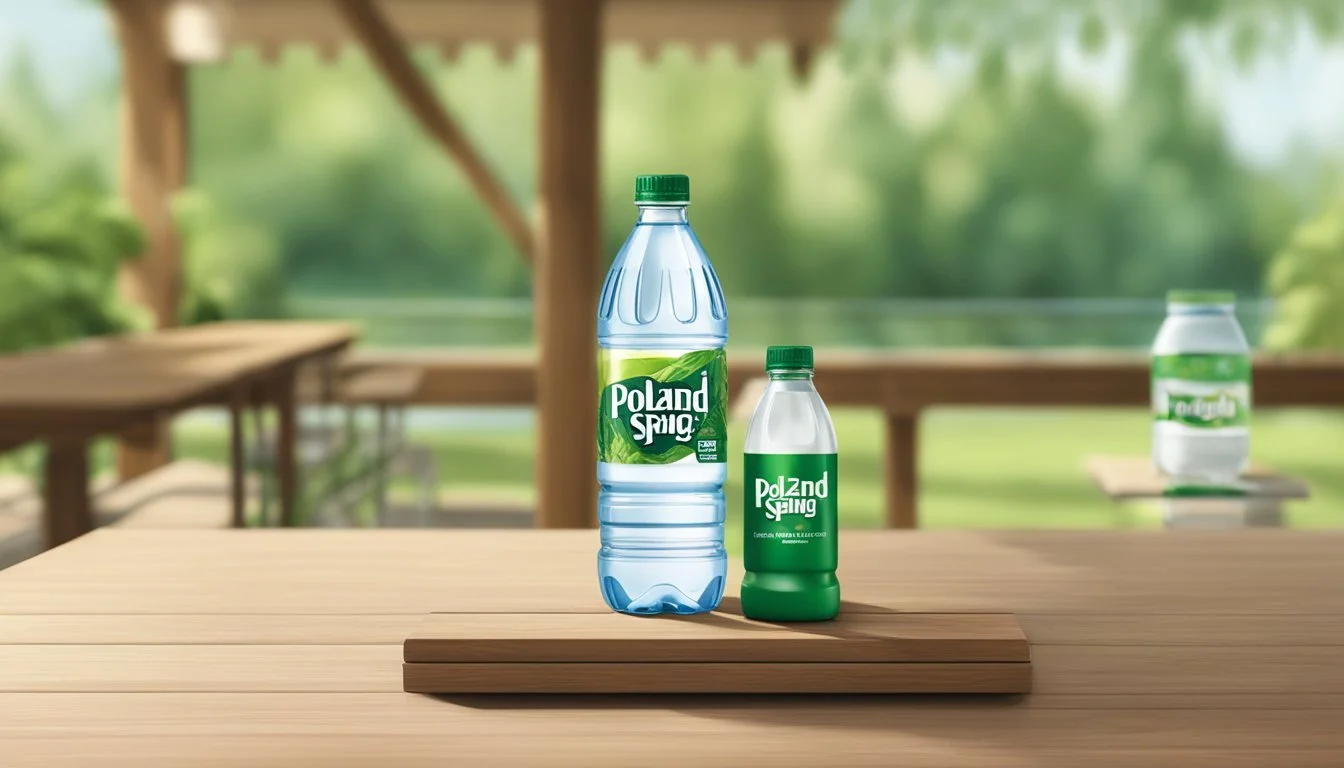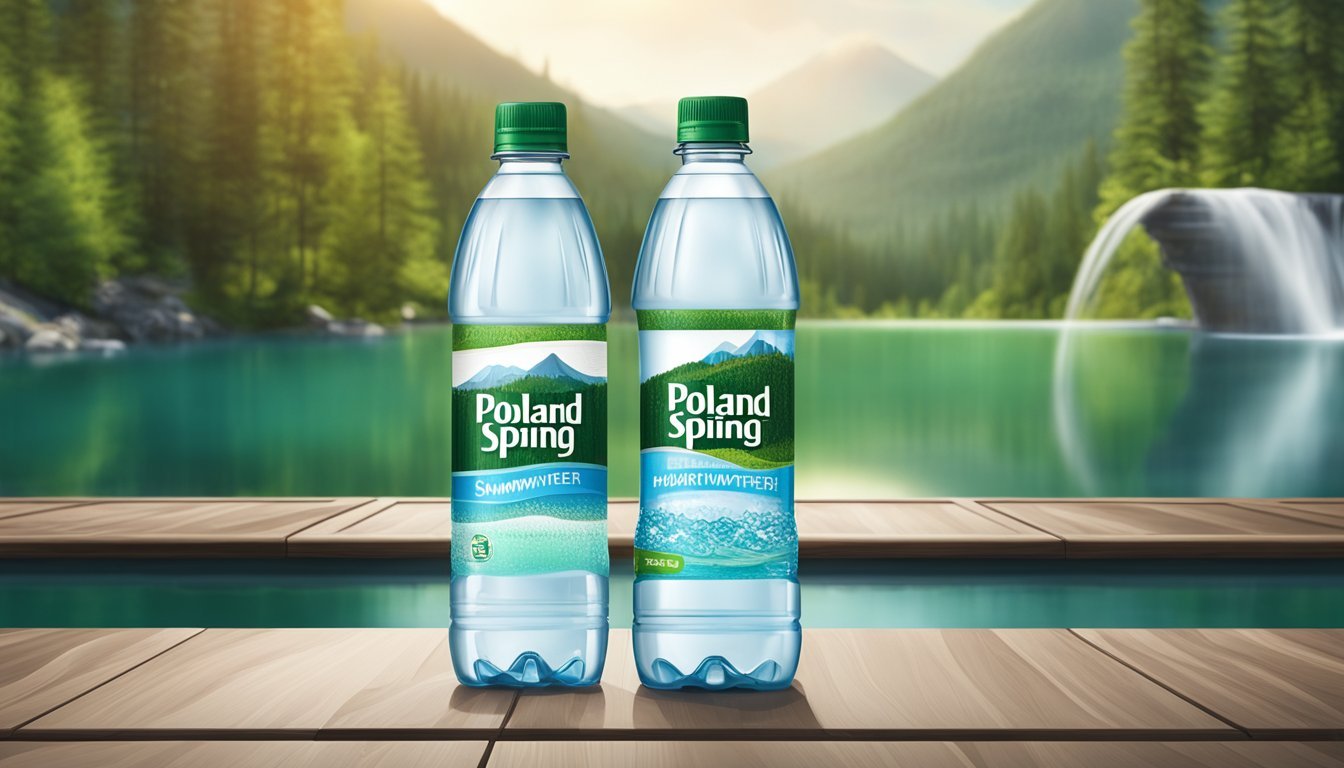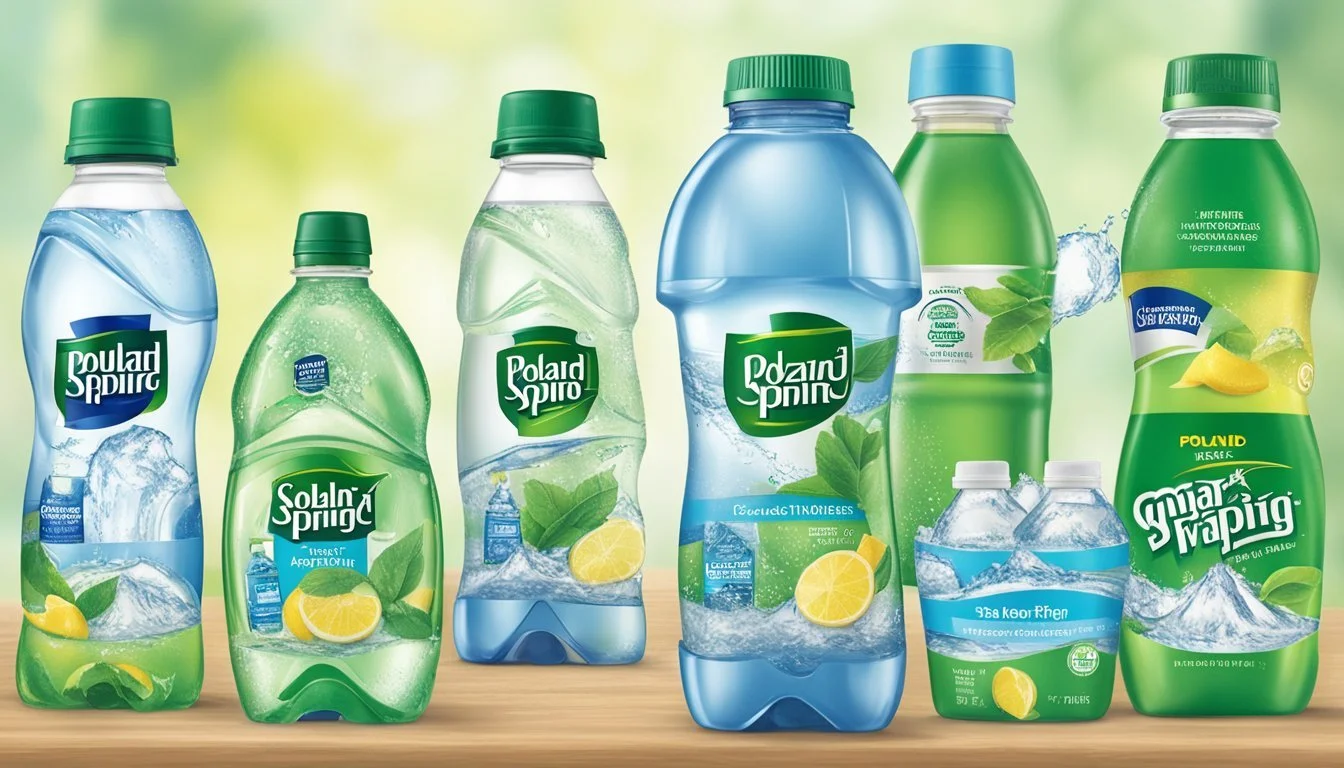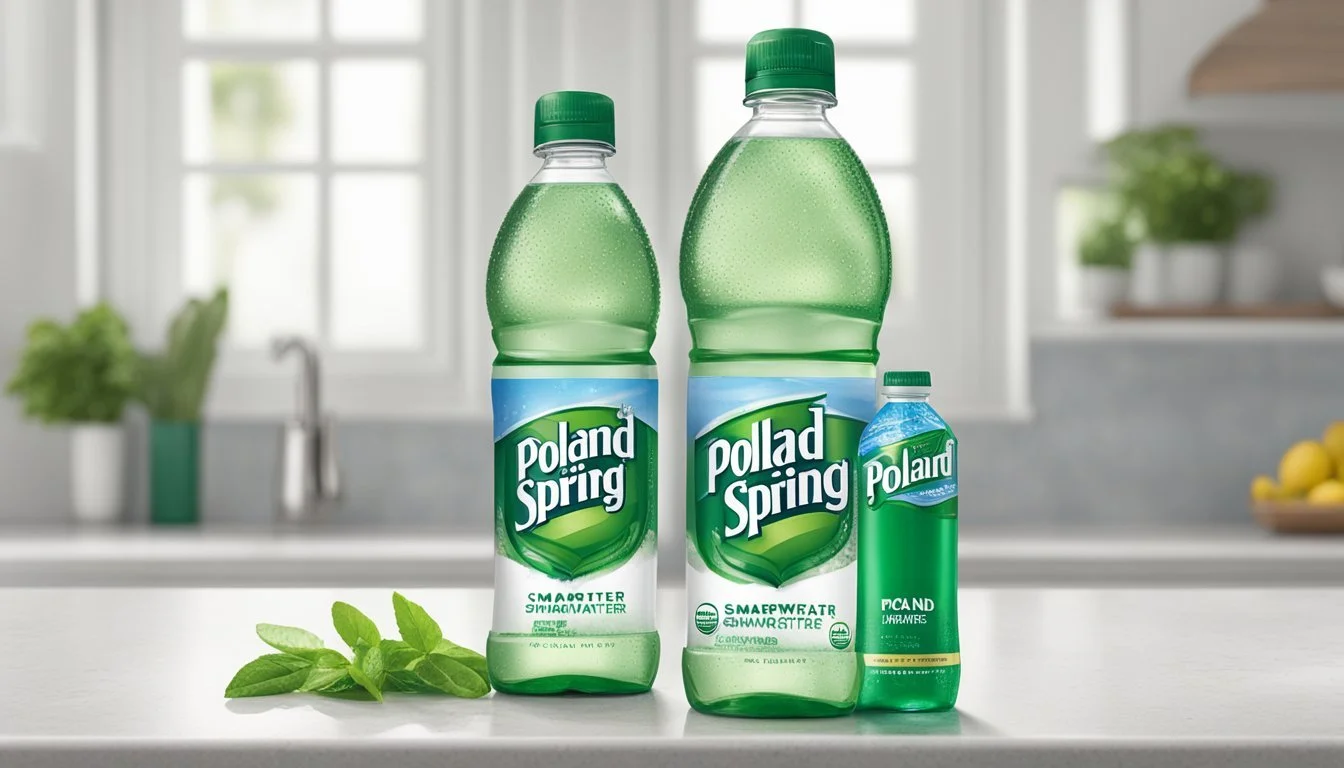Poland Spring vs. Smartwater
A Comparative Analysis of Bottled Waters
In the world of bottled water, Poland Spring and Smartwater stand out as two prominent brands that consumers often choose between. Poland Spring, sourced from multiple springs in Maine, is known for its long history and regional pedigree. It falls under the category of spring water, meaning it is filtered naturally and bottled at the source. This appeals to those who prefer a taste that can be traced back to a particular geographical origin.
Smartwater, on the other hand, adopts a different approach. It is a brand of distilled water that includes added electrolytes for taste. The process of vapor distillation followed by the introduction of electrolytes aims to mimic the natural cycle of water purification and enrichment. This process is advertised to create a pure and crisp tasting water, often attracting health-conscious individuals or those who prefer the taste that the added electrolytes provide.
As consumers become increasingly concerned about the quality of their drinking water, they scrutinize these brands not just for their taste and source, but also for their environmental impact and the methods used in their production and delivery. Each brand has its distinct qualities and appeals to different preferences, and the choice between Poland Spring and Smartwater often boils down to individual priorities and taste profiles.
The Significance of Brand in Bottled Water
When it comes to bottled water, the brand often transcends the product itself, with consumers associating different brands with quality, taste, and even social status. Here, the focus will be on how brand recognition shapes the market and influences consumer choices within the bottled water industry.
Market Overview and Brand Recognition
The bottled water industry features a multitude of brands, each vying for consumer attention through a combination of marketing, packaging, and purported health benefits. There are dominant players like Nestlé, offering products such as Poland Spring and Pure Life, and Coca-Cola, with its renowned brand Smartwater. Dasani, Aquafina, and Fiji have also carved out significant niches. On the luxury end, brands like Voss and Evian communicate a sense of exclusivity, while options such as Perrier and San Pellegrino have positioned themselves as synonymous with sparkling water.
Market leaders often benefit from widespread recognition:
Nestlé: A giant with multiple brands under its umbrella, including Poland Spring.
Smartwater: Marketed by Coca-Cola, known for its electrolyte-enhanced profile.
Dasani: Another Coca-Cola product, commonly found and recognized.
Fiji: Positioned as a premium natural artesian water brand.
Voss: Known for its distinctive bottle design and Norwegian origin.
The Influence of Brand on Consumer Choice
Brands wield significant power in influencing what consumers buy. For instance, Smartwater has capitalized on its association with high-profile endorsements and a clean, crisp taste profile. Meanwhile, heritage brands like Poland Spring bank on their long-standing reputation for natural spring water to retain customer loyalty.
The brand's influence is evident in consumer behavior:
Premium Brands: Customers may choose brands like Voss or Fiji for perceived quality or status.
Eco-conscious Choices: Environmentally aware consumers might prefer Boxed Water or Icelandic Glacial for their sustainable packaging and sourcing.
Lifestyle Brands: Lines such as LIFEWTR attract buyers interested in a brand that aligns with a health-focused or artistic lifestyle.
In bottled water, a name can signal everything from the water’s source to its filtration process, with companies like Nestlé (offering Pure Life) and the Coca-Cola subsidiary Glacéau (the creators of Smartwater) all capitalizing on these nuances to differentiate their products.
Understanding the Source and Process of Bottled Water
In choosing between Poland Spring and Smartwater, it is essential to look at their origins and the processes they undergo. This includes an examination of where the water is sourced, the filtration and purification methods used, and the standards and regulations they meet.
Comparative Analysis of Water Sources
Poland Spring: The source is a crucial factor for bottled waters like Poland Spring, which claims to originate from natural springs in Maine. These springs are typically fed by groundwater that has filtered through glacial sands, possibly enhancing the water with minerals.
Smartwater: In contrast, Smartwater starts as vapor-distilled municipal water, which later has electrolytes added for taste. Instead of natural springs, Smartwater undergoes a distillation process—a technique where water is boiled to steam then condensed back into a liquid to remove impurities and minerals.
Filtration and Purification Processes
Poland Spring: The filtration for Poland Spring involves a multi-barrier approach, which may include both natural and controlled processes. Being sourced from springs, the water naturally filters through rock which can impart a distinct mineral profile that some consumers find appealing.
Smartwater: Smartwater's purification is based on vapor distillation, mirroring the hydrological cycle. This is followed by the addition of electrolytes such as calcium chloride, magnesium chloride, and potassium bicarbonate for taste and to enhance hydration, emulating the effect of natural mineral water.
Purity Standards and Regulations
Both Poland Spring and Smartwater comply with the FDA's standards for bottled water quality, which include limits on contaminants like heavy metals and PFAS. Poland Spring must also adhere to the International Bottled Water Association (IBWA) regulations, ensuring the natural spring water's quality. Smartwater, being purified water, must meet the purified water standards established by the public health authorities, which are often stricter than those for spring water, focusing on the removal of virtually all dissolved solids.
Health and Nutritional Considerations
When evaluating bottled waters such as Poland Spring and Smartwater, a consumer should consider the electrolyte and mineral content, the hydration benefits, and potential safety concerns regarding contaminants.
Electrolyte and Mineral Content
Poland Spring is a brand known for its spring water which contains naturally occurring minerals. Meanwhile, Smartwater is a type of purified water that has added electrolytes, such as potassium bicarbonate and magnesium chloride, for taste. Both brands may have varying levels of essential minerals, making them beneficial for electrolyte replenishment.
Common Electrolytes in Bottled Water:
Potassium
Magnesium
Calcium
Sodium
Mineral Content:
Poland Spring: Naturally occurring minerals from the spring source.
Smartwater: Added electrolytes for enhanced taste.
Health Benefits of Hydration
Hydration is crucial for maintaining bodily functions and overall health. Both Poland Spring and Smartwater provide the necessary fluid intake to support hydration. Adequate intake of water can aid in digestion, improve skin health, and regulate body temperature.
Hydration Advantages:
Digestive Health: Water assists in digestion and prevents constipation.
Skin and Temperature: Proper hydration can lead to better skin health and temperature regulation.
Potential Contaminants and Safety Concerns
The safety of bottled water is regulated by the Environmental Protection Agency (EPA), which sets limits on contaminants such as lead, fluoride, chlorine, arsenic, heavy metals, and PFAS chemicals. While both brands adhere to these regulations, consumers should be aware that:
Contaminants can come from various sources, including manufacturing processes and environmental pollution.
Regulatory Standards: Both Poland Spring and Smartwater must meet EPA standards for bottled water, which includes testing for contaminants.
Chlorine and other disinfectants are sometimes used to remove harmful pathogens.
Possible Contaminants:
Heavy Metals: Lead, arsenic, and other heavy metals are regulated to be within safe limits.
PFAS Chemicals: Man-made chemicals that can be found in the environment and are monitored for safety.
In summary, both Poland Spring and Smartwater offer hydration with varying levels of minerals and electrolytes, and both are subject to regulatory standards to ensure safety from potential contaminants.
Product Offerings: Varieties and Innovations
Poland Spring and Smartwater distinguish themselves through diverse product offerings and innovations, from flavored variants to sustainable packaging solutions.
Flavored and Enhanced Water Options
Smartwater, a Coca-Cola brand, has diversified beyond its original vapor-distilled product with offerings like Smartwater+, available in three variations – Renew, with dandelion and lemon, Tranquility, with ashwagandha and tangerine, and Clarity, with ginseng and green tea. Smartwater also has flavored sparkling options, such as strawberry blackberry, pineapple kiwi, and cucumber lime. Meanwhile, Poland Spring offers a line called Poland Spring Origin which presents as a pure, natural spring water sourced from Maine with naturally occurring electrolytes.
Environmentally Friendly Packaging and Sustainability Practices
Poland Spring is involved in numerous initiatives aimed at sustainability, recently reducing the plastic in its single-serve bottles by 30% and pledging to use 100% recycled plastic across all packaging. The brand’s bottles are also BPA-free, ensuring a safer product for consumers and the environment. Smartwater, similarly, is exploring sustainable packaging by introducing 100% recycled plastic bottles for its still water varieties and has implemented energy-efficient production methods, like the use of ultraviolet light purification.
While both brands invest in environmental strategies, it’s essential for consumers to weigh their choices considering the environmental footprints of bottled waters versus alternatives such as filtered tap water.
Consumer Experience: Taste and Aesthetic Appeal
When it comes to bottled water, consumers prioritize taste and aesthetic appeal, which significantly influence their buying decisions. Brands like Smartwater and Poland Spring are not only competing in terms of quality but also in how they present their product and resonate with consumer preferences.
The Importance of Taste in Consumer Preferences
Taste plays a crucial role in bottled water preferences. Smartwater is known for its purity, achieved through vapor distillation, which results in a crisp, clean taste that many consumers enjoy. It also adds a blend of electrolytes for a distinctive taste that differentiates it from other brands.
Poland Spring, sourced from natural springs in Maine, offers a fresh taste profile derived from its unique mineral composition. This brand tends to be favorably contrasted against Pure Life and Ice Mountain, offering a straightforward, refreshing hydration experience without the complexity of mineral-enhanced flavors found in brands like Fiji or Evian.
Consumers regularly compare the soft, neutral pH taste of brands like Poland Spring with the alkaline taste of Essentia, which includes added electrolytes for taste and hydration. In some cases, specific mineral content such as that in Mountain Valley, sourced from Arkansas, or Acqua Panna from Tuscany, can give water a distinct sense of place that appeals to certain palates.
Packaging Design and its Impact on Brand Perception
The visual appeal of bottled water brands heavily influences consumer choices. Smartwater has cultivated a modern, sleek image with its transparent and minimalist design. Its bottles are often associated with a contemporary lifestyle, aligning with the aesthetics of fitness and health-oriented consumers.
On the other hand, Poland Spring presents a more traditional experience with its green label, showcasing images of nature and Maine's pristine environment. This design choice reflects the brand's commitment to natural purity and appeals to those who value tradition and environmental imagery.
The packaging of Voss, for instance, stands out through its cylindrical, classy glass bottle design, often found in high-end hotels and restaurants. Perrier, recognized for its green bottles and distinctively bubbly mineral water, has long been established as a refreshingly chic option.
The bottled water market continues to evolve, integrating enhanced features such as eco-friendliness and improved usability. Brands like San Pellegrino with their glass bottles and Arrowhead with their eco-shaped designs both reflect a shift towards materials that might minimize environmental impact while maintaining consumer appeal.
In assessing the consumer experience for bottled water, taste and design are not just aspects of the product; they are definitive factors in brand preference and loyalty, with every sip and glance carrying the potential to solidify or swerve consumer choices.
Economic Aspects: Cost and Accessibility
When comparing Poland Spring and Smartwater, it's crucial to examine their price points and market availability to understand the economic impacts on the consumer.
Analysis of Price Points
Poland Spring, sourced from Maine, is often seen as a budget-friendly spring water option. Smartwater, on the other hand, is positioned as a premium product with its vapor distillation process and the addition of electrolytes for taste. A comparison of retail prices typically shows that Poland Spring can be found at a lower cost per liter than Smartwater. For example, a 500mL bottle of Poland Spring may cost around $1.00, while a Smartwater of the same volume could be approximately $1.50 to $2.00. This difference in pricing can be attributed to Smartwater's higher production costs and brand positioning.
Smartwater also markets specialty products such as Smartwater+ with functional ingredients like Altravitinat, a blend of electrolytes and added minerals for improved hydration. These specialty products can have a higher price point due to the added benefits they claim.
Availability and Convenience in Different Markets
Poland Spring boasts wide availability, particularly on the East Coast of the United States. It is commonly found in large chains, convenience stores, and small local shops. Smartwater also enjoys widespread distribution and is readily available across the US in similar retail outlets. However, Smartwater earns points for convenience due to its presence in venues like Starbucks, offering an easy grab-and-go experience for consumers.
Premium waters such as Voss or LeBlue may not have the same level of market penetration as Poland Spring and Smartwater. This can be attributed to their positioning within the niche luxury market, which limits their accessibility to everyday retail locations. Additionally, waters influenced by notable features such as volcanic rock filtration or New Tropicality flavored options can cater to a specific customer base, potentially limiting their overall market convenience.
In summary, Poland Spring and Smartwater offer contrasting propositions in terms of cost and market convenience. The former provides a more economical choice, while the latter is available at a higher price that is justified by its value-added production method and subsequent partnerships that enhance convenience.
Final Verdict: Poland Spring vs. Smartwater
Choosing between Poland Spring and Smartwater involves considering their sources, purification processes, and the presence of minerals for taste and hydration benefits.
Summarizing Key Differences
Source: Poland Spring originates from a variety of springs in Maine, suggesting a natural spring water composition, while Smartwater is produced through vapor distillation, mimicking the hydrological cycle, and then enhanced with electrolytes.
Filtration and Purity: Smartwater undergoes vapor distillation, a process akin to reverse osmosis, with additional steps designed to remove contaminants and impurities. Poland Spring is filtered naturally by the earth and through additional purification steps, yet the brand has faced legal scrutiny over the legitimacy of their spring water source.
Mineral Content: While both brands offer hydration, Smartwater includes added electrolytes like calcium chloride, magnesium chloride, and potassium bicarbonate to enhance taste and replenish minerals lost during activity. Poland Spring is described as having naturally occurring minerals, providing a distinctive taste profile.
Price and Accessibility: Generally, Smartwater tends to be priced higher due to its added electrolytes and branding as a premium product. Poland Spring is often less expensive and boasts widespread availability, presenting a cost-effective option for consumers.
Recommendations Based on Consumer Needs
For Taste: Consumers who prefer a water with a natural taste might opt for Poland Spring due to its source from various springs. Those interested in a smooth water with added electrolytes for taste might lean toward Smartwater.
For Hydration: Both brands effectively hydrate, yet Smartwater may be a better choice for those seeking enhanced hydration with electrolyte replacement, especially after workouts or significant sweat loss.
For Quality and Safety: Individuals concerned about contaminant levels should consider Smartwater for its thorough filtration process. Poland Spring, while generally considered safe, has faced legal challenges concerning its source, which may influence some buyers.
For Eco-conscious Consumers: It’s important for environmentally conscious consumers to consider the impact of bottling practices on sustainability. Both Smartwater and Poland Spring offer options in recyclable packaging, but the environmental impact of sourcing and production methods should also be taken into account.
In evaluating Poland Spring and Smartwater, consumers should consider these factors alongside their personal requirements for taste, quality, and price to make an informed decision that aligns with their hydration needs.
Conclusion
When comparing Poland Spring and Smartwater, consumers often consider taste, source, and purification process. Poland Spring, originating from Maine, offers natural spring water from various sources. Each source contributes to the characteristic taste that many find appealing. On the other hand, Smartwater is known for its vapor-distilled municipal water with added electrolytes, which claims to mimic the taste and composition of natural spring water.
In terms of purity, both brands adhere to stringent bottling processes and meet FDA standards. Smartwater's distillation process ensures that impurities are removed, while Poland Spring relies on the natural filtration of spring water.
The environmental impact is another factor. Poland Spring has been criticized for its impact on local ecosystems, but the brand has taken steps to improve sustainability. Conversely, Smartwater comes in recyclable packaging but its distillation process is energy-intensive.
Finally, the choice may come down to individual preferences:
Some prefer the natural minerality of Poland Spring.
Others opt for the consistent purity and taste of Smartwater.
Thus, the "better" bottled water depends on personal values: natural source versus purified content, environmental practices, and individual taste. Both Poland Spring and Smartwater offer distinct benefits that cater to different audiences.








